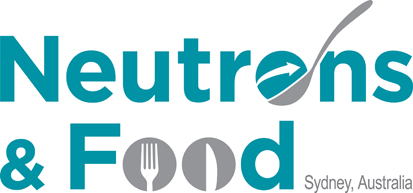Speaker
Description
Polysaccharide hydrocolloids are a class of biological polymers with unique physicochemical properties, versatile functionality and a broad spectrum of applications in foods, where they are used as thickening, gelling and structuring agents. Unlike proteins and DNA, typical food polysaccharides comprise a relatively small repertoire of constituent monomers, making their properties difficult to modulate without a need for chemical modification.
Here we report the discovery and rheological and structural characterisation of a special class of polysaccharides found in seed mucilage of plants from the Plantago genus. These polysaccharides have a xylan backbone densely decorated with an array of side-chains. Almost 95% of xylose resides of the backbone are decorated with side-chains, which classifies these polymers as bottle-brushes. Typically, the side-chains of these polymers are small oligosaccharides, 1 to 4 residues long, and comprise arabinose and xylose, and glucuronic acid residues. The variety of possible permutations of residues within side-chains confers these polysaccharides a number of unique aspects, including motif-specific interactions.
In particular, we have isolated two gel-forming arabinoxylan (AX) fractions by solvent specific extraction of Plantago ovata seed mucilage: AX-A(alkali) and AX-W(water) [1-3]. Both fractions are found to be neutral bottle-brush polysaccharides exclusively comprised of xylose and arabinose with similar molecular weight and linkage composition. Despite compositional similarity, their rheological and structural properties are markedly different. Using a combination of USANS/SANS with rheological characterisation techniques, we have established the hierarchical nature of hydrogel assembly, with pore sizes in the range between 30 and 1000 nm. Using enzymatic cleavage of terminal arabinoses of side chains we induced significant changes in rheological and structural properties of these complex arabinoxylans, which enabled us to corroborate that (i) hydrogen bonding between side chains of neighbouring molecules is a key driver of gel formation; (ii) the strength of hydrogen bonding is motif specific, which explains differences in physical properties between two fractions.
It is envisaged that discovery of motif-dependent interactions will opens new opportunities for rational design of polysaccharides with targeted and highly tuned physical properties, providing a far-reaching potential for delivering novel tailor-made hydrocolloids for use in foods, pharmaceutical industry, and smart materials.
- Yu, L., Yakubov, G. E., Zeng, W., Xing, X., Stenson, J., Bulone, V., & Stokes, J. R. (2017). Multi-layer mucilage of Plantago ovata seeds: Rheological differences arise from variations in arabinoxylan side chains. Carbohydrate Polymers, 165, 132-141
- Yu, L., Yakubov, G. E., Martínez-Sanz, M., Gilbert, E.P., & Stokes, J. R. (2018). Rheological and structural properties of complex arabinoxylans from Plantago ovata seed mucilage under non-gelled conditions. Carbohydrate Polymers, 193, 179-188.
- Yu, L., Yakubov, G. E., Gilbert, E.P., & Stokes, J. R. (2018). Multi-scale assembly of hydrogels formed by highly branched arabinoxylans from Plantago ovata seed mucilage studied by USANS/SANS and rheology. Carbohydrate Polymers, in press.

